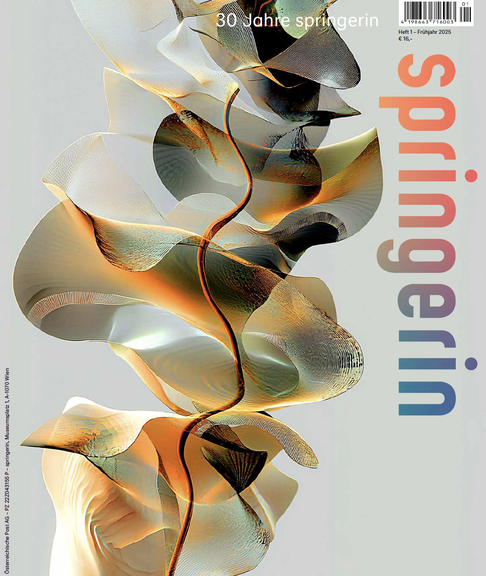Issue 1/2025
30 Years of springerin
After 30 years, we are celebrating a very special anniversary in March 2025 – with our 120th issue. On that very occasion, we are presenting a kind of reflective self-ethnography in which companions from different fields (practical and theoretical) have their say. Questions such as the following are explored: Where and in which narrower milieu was our project located three decades ago? How has it changed over the years, and in what directions has it developed? Which discursive positions are still valid in retrospect, which course corrections were or are necessary in order to give our form of analysis contemporary validity? How has the continuous publication activity affected our way of thinking with and about art, and what expansion or modification of our self-image was effected through this? Moreover: What spaces will be available for the more advanced sectors of contemporary art in the future? Which time-critical assemblages will – speculatively asked – be necessary to escape the confusion and adversities of the here and now? “30 Years of springerin” brings together voices and fragments, both artistic and theoretical, around this complex of questions. Long-standing authors and companions who have been critically concerned with the debates conducted in our medium will have their say and make visual contributions. At the same time, the aim is to venture an outlook on what form of art discourse could be appropriate for the coming, 'not-yet-established' beyond the boundaries of the present.
